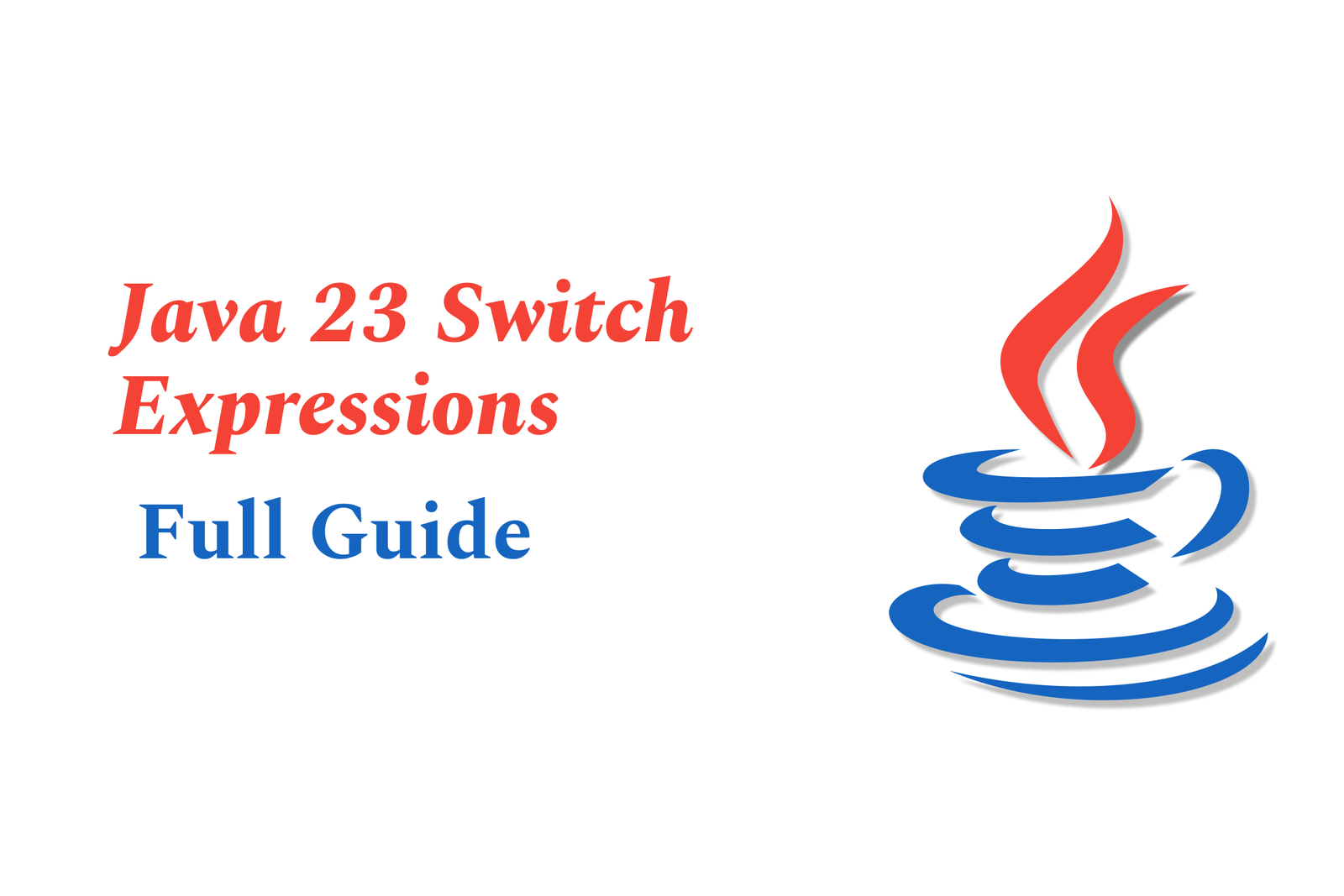Java 23 Switch Expressions: Full Guide
Java 23 Switch Expressions enhance the traditional switch by enabling it as a value-returning expression with concise arrow syntax, no fall-through, and advanced pattern matching—including primitives—making Java code safer, clearer, and more expressive.
Java 23 Switch Expressions: Full Guide
1 ) Introduction to Switch Expressions
Java has long included the traditional switch statement which many developers are accustomed to despite its quirks such as mandatory breaks and potential for errors. Starting with Java 12, switch expressions were introduced to enhance expressiveness and reduce mistakes by allowing switch to act as an expression that returns a value. Java 13 refined this feature further.
2 ) Switch Expression Syntax Enhancements
The new lambda style arrow syntax ( >) replaces colons, improving clarity and conciseness.
Switch can now return a value, making it usable in assignments and expressions.
Fall through is eliminated by default which removes the need for break statements.
3 ) Advantages Over Traditional Switch Statements
Less error prone due to no fall through and no need for explicit breaks.
More expressive as cases can yield values directly.
Enables early returns from switch expressions.
4 ) Evolution and Refinement Across Java Versions
Java 12 introduced switch expressions with basic functionality and arrow syntax.
Java 13 refined switch expressions making them more robust and integrated.
Later versions, including previews in Java 21 and 23, incorporate pattern matching and primitive type patterns for switch enhancing type flexibility and expressiveness.
5 ) Pattern Matching in Switch (Preview Features in Java 21 and 23 )
Pattern matching combines type checking and casting in switch cases for cleaner code.
Support expanded to primitive types allowing patterns to match primitive values directly.
Enables “when” clauses for more granular control in case matching.
6 ) Other Related Preview Features in Java 23
Module Import Declarations for easier import management.
Flexible Constructor Bodies allowing statement placement before constructor calls.
Implicitly Declared Classes and Instance Main Methods to simplify initial coding for learners.
String Templates feature was withdrawn in JDK 23 due to lack of consensus on design.
7 ) Summary
Java 23 continues to build on the switch expression improvements begun in earlier versions by enhancing pattern matching with primitive types, increasing language flexibility and safety. These changes simplify code, reduce boilerplate, prevent common bugs, and enable more expressive switch usage in modern Java development.
This guide summarizes the evolution, syntax improvements, and new preview features around switch expressions in Java up to version 23, highlighting ongoing efforts to modernize and streamline switch constructs.
https://justacademy.in/news-detail/react-native?s-new-gesture-apis:-what-you-can-build-now
https://justacademy.in/news-detail/swift-package-manager:-new-features-for-modular-apps
https://justacademy.in/news-detail/flutter-and-blockchain-integration
https://justacademy.in/news-detail/java-in-blockchain-smart-contracts:-use-cases
https://justacademy.in/news-detail/swiftui-charts-framework:-what?s-new-in-2025
Related Posts
In 2025, top Angular libraries offer modern, feature-rich components and tools for building dynamic web apps. From powerful data grids to low-code platforms like UI Bakery, these libraries enhance development speed, UI design, and scalability, making them essential for Angular developers.
Migrating from AngularJS to Angular 17 involves gradually upgrading your app by running both frameworks together using tools like ngUpgrade, rewriting components in TypeScript, and adopting Angular’s modern architecture to enhance performance, maintainability, and long-term support.
Angular state management tools help organize and handle app data efficiently, improving scalability and maintainability. Popular options include NgRx for robust, RxJS-based patterns, and newer Signal Store solutions that offer simpler, reactive approaches integrated tightly with Angular’s latest features.
RxJS in Angular empowers developers to manage asynchronous data streams with powerful operators like `forkJoin`, `combineLatest`, and `zip`. Mastering these key operators in 2025 is essential for building efficient, reactive applications that handle complex event sequences seamlessly.
Angular performance optimization in 2025 focuses on improving app speed and responsiveness by using techniques like OnPush change detection, lazy loading, efficient data caching, and AOT compilation. These practices reduce load times, enhance user experience, and ensure scalable, fast Angular applications.
In 2025, Angular remains preferred for large-scale, enterprise apps with its robust, all-in-one framework, while Vue attracts developers seeking simplicity and fast development for smaller projects. Both frameworks excel, with choice driven by project needs and team expertise.
Angular Signals are a new reactive primitive in Angular 16 that enable fine-grained, efficient change detection by automatically tracking dependencies and updating only affected parts of the UI. They simplify state management and boost app performance, revolutionizing Angular's reactivity model.
Angular interview questions to prepare in 2025 focus on core concepts like components, directives, data binding, routing, and dependency injection, along with TypeScript mastery and latest Angular features to ensure strong practical knowledge for building scalable, efficient web applications.
AngularJS reached its official end of support in January 2022, meaning no further updates or security patches. To ensure app security and performance, developers should consider migrating to modern Angular versions or seek third-party long-term support options if immediate migration isn’t possible.
The Angular Roadmap 2025 highlights upcoming features focused on improving developer experience and performance, including zoneless Angular, Signals integration, enhanced Forms, async data handling, improved HMR, and expanded Angular Material/CDK enhancements, driving modern, efficient web app development.










